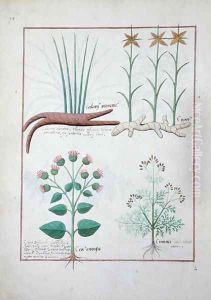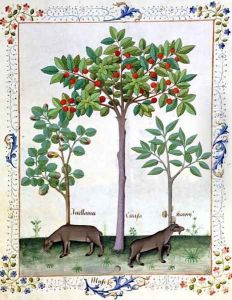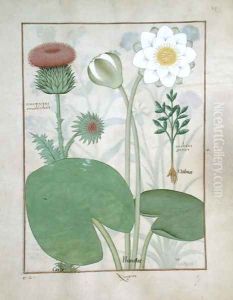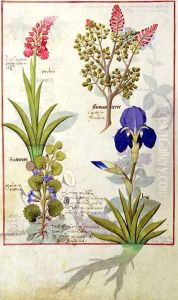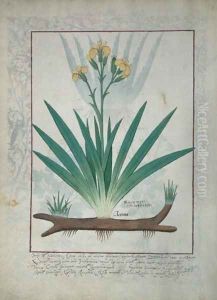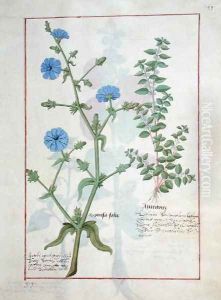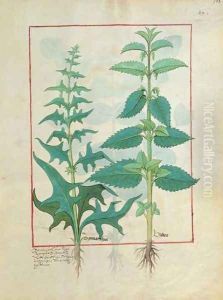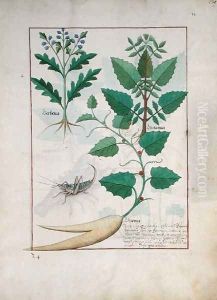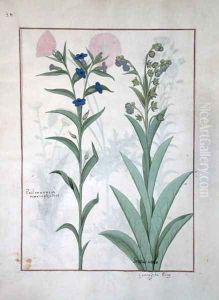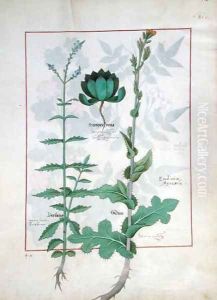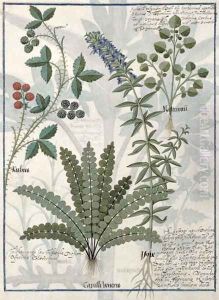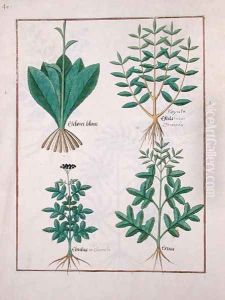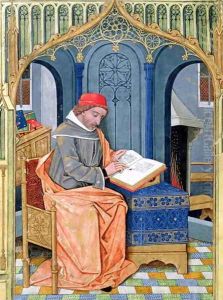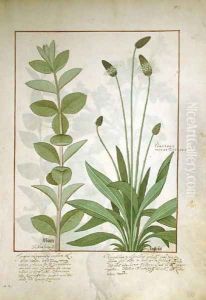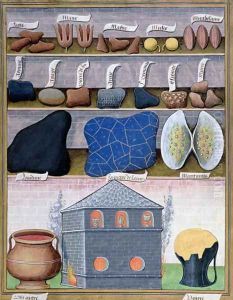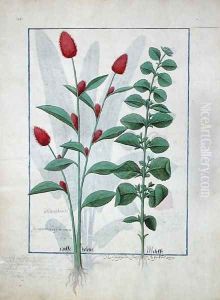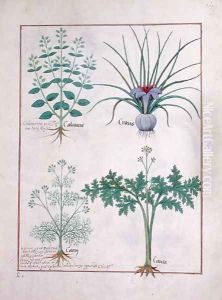





Calamint, Crocus, Carraway and Citusa, illustration from The Book of Simple Medicines by Mattheaus Platearius d.c.1161 c.1470
-
About Reproduction
Discover the allure of art with our faithful reproduction of "Calamint, Crocus, Carraway and Citusa, illustration from The Book of Simple Medicines by Mattheaus Platearius d.c.1161 c.1470", originally brought to life by the talented Robinet Testard. Unlike posters or prints, our hand-painted oil painting breathes an unique sense of depth and texture into your space. Every detail, every stroke, and every texture is meticulously recreated, paying the perfect homage to Robinet Testard and his artistic vision.
Owning this piece is more than just decoration - it's a statement of your refined taste in art. Let the vibrant colors and intricate details of this replica serve as a daily reminder of the beauty in our world. Elevate your decor and appreciate the richness of art with our replica of this masterpiece.
-
Painting Description
The illustration "Calamint, Crocus, Carraway and Citusa" is a notable work from "The Book of Simple Medicines," a medieval herbal compendium originally authored by Mattheaus Platearius, a physician from the renowned medical school of Salerno, who died circa 1161. This particular illustration, created around 1470, is attributed to Robinet Testard, a French illuminator known for his detailed and vibrant manuscript illustrations. Testard's work is characterized by its meticulous attention to botanical accuracy and artistic elegance, reflecting the medieval European interest in medicinal plants and their uses.
"The Book of Simple Medicines," also known as "Circa Instans," was a widely circulated text in medieval Europe, serving as a crucial reference for the identification and application of medicinal herbs. The book compiles knowledge from classical sources, including Dioscorides and Galen, and integrates it with the empirical observations of medieval practitioners. The inclusion of illustrations such as "Calamint, Crocus, Carraway and Citusa" was essential for the practical use of the text, aiding physicians and apothecaries in the accurate identification of plants.
In this illustration, each plant is depicted with remarkable precision, showcasing Testard's skill in rendering botanical details. Calamint (Calamintha), known for its aromatic properties and use in treating respiratory ailments, is illustrated with its characteristic small, purple flowers. Crocus (Crocus sativus), the source of the valuable spice saffron, is shown with its distinctive bright orange stigmas. Carraway (Carum carvi), used both as a culinary spice and for its digestive benefits, is depicted with its feathery leaves and umbels of small white flowers. Citusa, a less commonly known plant, is also included, though its exact identification remains a subject of scholarly debate.
Robinet Testard's illustration not only serves as a visual aid but also as a testament to the rich tradition of botanical study and the transmission of medical knowledge in medieval Europe. The detailed portrayal of these plants underscores the importance of accurate visual representation in the study and application of herbal medicine during this period.
-
Lead Time & Shipping
When you order this oil painting replica, it typically takes 2-3 weeks to paint. If the artwork is more complex, it might need a little more time to ensure the best quality. Once it's ready, we'll send you a photo for your approval. After you give the green light, we'll ship it to you for free.
-
Return & Refund
We believe in the quality of our hand-painted oil painting reproductions, and your satisfaction is our priority. If for any reason, you are not completely satisfied with your purchase, we offer a 45-day return policy. You can return your artwork within 45 days of receipt and receive a full refund. Please note that the artwork must be returned in the original packaging and in the same condition as it was received.





